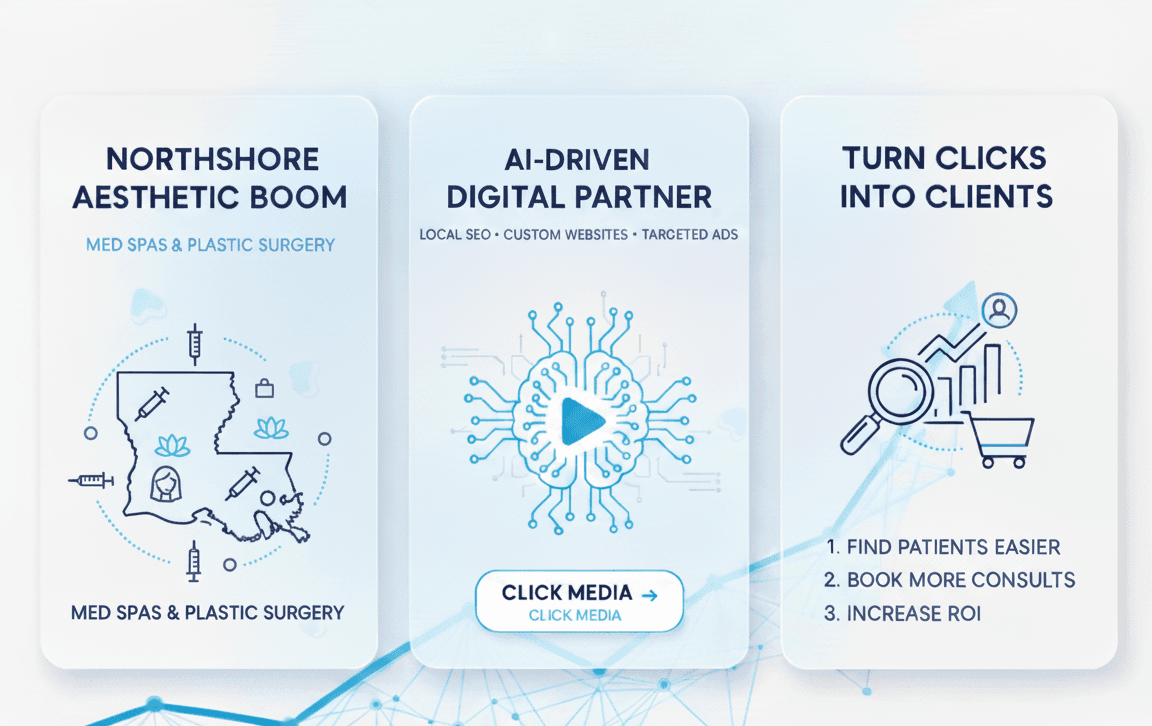Introduction:
In today's digital-first world, businesses must adapt and thrive online to stay competitive. Digital marketing has become a cornerstone of business success, offering a wide range of strategies to help brands reach their target audiences and achieve growth. Whether you're a startup or an established company, mastering digital marketing can help you unlock new revenue streams, improve customer engagement, and build brand awareness.
The digital landscape has evolved significantly over the years, transforming how businesses interact with consumers. With the rise of mobile devices, social media, and search engines, digital marketing has shifted from being an optional strategy to an essential part of business operations. It’s no longer just about having a website or posting on social media; it’s about crafting a seamless digital experience that connects with your audience at the right moment.
Understanding the Core Elements of Digital Marketing:
1. Search Engine Optimization (SEO):
SEO is the practice of optimizing your website to rank higher on search engine results pages (SERPs) for specific keywords and phrases. When done correctly, SEO can drive organic (unpaid) traffic to your site, increase visibility, and improve user experience.
Why SEO is Important:
Increased Visibility: Higher rankings lead to more clicks and greater visibility for your business.
Cost-Effective: Unlike paid advertising, SEO helps generate long-term results without ongoing costs.
Builds Credibility: Websites that rank higher are perceived as more trustworthy by users.
Key SEO Techniques:
Keyword Research: Identify keywords that your audience is searching for and integrate them into your content.
On-Page Optimization: Optimize page titles, meta descriptions, headers, and images to improve relevance and readability.
Technical SEO: Ensure your website is mobile-friendly, has a fast loading speed, and features a clean URL structure.
Link Building: Earn quality backlinks from authoritative sites to boost your site's credibility.
2. Content Marketing:
Content marketing focuses on creating valuable, relevant content to attract and engage your target audience. Whether it’s blog posts, videos, infographics, or eBooks, high-quality content helps establish your brand as an industry authority and nurtures relationships with potential customers.
Why Content Marketing Matters:
Increases Engagement: Quality content keeps your audience engaged, encouraging them to spend more time on your site.
Drives Conversions: Well-crafted content can guide customers through the sales funnel, turning prospects into leads and, ultimately, sales.
Boosts SEO: Content helps improve SEO by incorporating targeted keywords and providing fresh, relevant material for search engines.
Content Marketing Strategies:
Blogging: Publish valuable articles that address customer pain points and provide solutions.
Video Content: Create engaging videos that explain products, share customer testimonials, or showcase industry expertise.
Social Media Posts: Share content on platforms like Facebook, Twitter, and LinkedIn to increase your reach and brand awareness.
3. Social Media Marketing:
Social media platforms are more than just spaces for socializing; they are powerful marketing tools that allow businesses to engage with their audience in real-time. Platforms like Instagram, Facebook, LinkedIn, and Twitter provide businesses with the opportunity to build relationships, promote products, and share their brand story.
Why Social Media Marketing is Crucial:
Targeted Reach: Social media allows businesses to target specific demographics based on age, interests, location, and more.
Brand Awareness: Regular engagement on social media keeps your brand top-of-mind for your followers.
Customer Insights: Social media provides valuable insights into customer behavior, preferences, and feedback.
Best Practices for Social Media Marketing:
Consistent Posting: Maintain a consistent posting schedule to keep your audience engaged.
Engage with Followers: Respond to comments and messages, and engage in conversations to build relationships.
Leverage Ads: Paid social media ads help you target a broader audience and increase conversions.
4. Email Marketing:
Email marketing remains one of the most effective ways to engage with customers and drive conversions. It involves sending personalized emails to nurture relationships, promote products, and share relevant updates.
Why Email Marketing Works:
Direct Communication: Emails provide a direct line of communication with your audience.
Personalization: Personalized emails tailored to a customer’s preferences or behaviors increase the likelihood of conversion.
High ROI: Email marketing delivers one of the highest returns on investment compared to other marketing channels.
Tips for Effective Email Campaigns:
Segment Your Audience: Divide your email list based on customer demographics or behaviors to send relevant content.
Craft Compelling Subject Lines: The subject line is the first thing recipients see; make it eye-catching and concise.
Call-to-Action (CTA): Every email should include a clear CTA, guiding recipients toward the next step, whether it's making a purchase or signing up for a webinar.
5. Paid Advertising (PPC):
Paid advertising, such as Pay-Per-Click (PPC) campaigns, allows businesses to advertise their products or services to a highly targeted audience. This method can generate immediate traffic, but it requires careful strategy and ongoing optimization.
Why PPC is Effective:
Instant Results: Unlike SEO, which can take time to show results, PPC delivers immediate traffic.
Precise Targeting: PPC allows you to target your ads based on demographics, location, device, and even time of day.
Cost Control: With PPC, you only pay when someone clicks on your ad, allowing you to manage your advertising budget effectively.
Popular PPC Platforms:
Google Ads: The most common PPC platform that allows businesses to advertise on Google search results and other websites.
Social Media Ads: Platforms like Facebook and LinkedIn offer highly targeted advertising options that cater to specific user behaviors and interests.
Current Digital Marketing Trends:
1. AI in Digital Marketing:
Artificial intelligence (AI) has become a game-changer in the digital marketing world, offering businesses a new way to engage with customers and personalize experiences. From chatbots that provide instant support to AI-powered analytics tools that predict customer behavior, AI is revolutionizing how marketers approach their campaigns.
How AI is Transforming Digital Marketing:
Personalization at Scale: AI can analyze vast amounts of customer data to create personalized experiences, delivering the right content to the right audience at the right time.
Chatbots and Automation: AI-powered chatbots can answer customer queries, process orders, and assist with troubleshooting, all while providing a 24/7 service.
Predictive Analytics: AI tools can forecast trends and behaviors, helping businesses make informed decisions about their marketing strategies.
Real-Life Examples:
Amazon’s Personalized Recommendations: Amazon uses AI to analyze customer purchase history and browsing behavior, offering tailored product recommendations.
Chatbots on Websites: Companies like Sephora and H&M use chatbots to assist customers, providing real-time answers and driving sales.
2. Voice Search Optimization:
With the rise of smart speakers like Amazon Alexa, Google Home, and Apple Siri, voice search is becoming an essential element of digital marketing. Consumers are now asking questions directly to their devices, and businesses must adapt their SEO strategies to accommodate this shift.
Optimizing for Voice Search:
Focus on Natural Language: Voice searches tend to be longer and more conversational than text searches. Optimize your content for question-based queries.
Use Structured Data: Marking up your content with structured data (Schema.org) helps search engines understand and display it better in voice search results.
Local SEO: Voice search often involves local queries like "near me" or "open now." Ensure your business is listed accurately on local directories and Google My Business.
Impact on Digital Marketing:
Voice search is changing how businesses create content. Marketers need to adapt by providing clear, concise answers to commonly asked questions.
3. Video Marketing:
Video content is becoming increasingly popular, with consumers preferring to watch videos over reading text. Platforms like YouTube, TikTok, and Instagram offer businesses unique opportunities to reach and engage with their target audience through visual storytelling.
Why Video Marketing is So Effective:
Engagement: Videos are highly engaging and can communicate complex ideas quickly and clearly.
Emotional Connection: Videos help create an emotional connection with the audience, whether through storytelling or showcasing customer testimonials.
Boosts Conversion Rates: Including videos on landing pages has been shown to increase conversions significantly.
Tips for Creating Compelling Video Ads:
Keep it Short and Sweet: Attention spans are short. Aim for videos that are 30 seconds to 1 minute long.
Include a Strong CTA: Make sure your video includes a clear call to action, such as directing viewers to your website or encouraging them to sign up for a newsletter.
Optimize for Mobile: The majority of videos are watched on mobile devices, so ensure your video content is mobile-friendly.
4. Influencer Marketing:
Influencer marketing has grown significantly in recent years, with businesses collaborating with influencers to promote their products and build trust within their communities. Influencers have the power to sway their followers' purchasing decisions, making them valuable partners for brands.
How Influencer Marketing Works:
Authenticity: Influencers create authentic content that resonates with their followers. Businesses tap into this by having influencers share their brand story in a way that feels natural.
Reach: Influencers have established trust with their followers, which makes their recommendations highly impactful.
Targeted Audiences: Brands can select influencers based on their niche and audience demographics, ensuring they reach the right people.
Example:
Nike’s Partnership with Colin Kaepernick: Nike's collaboration with the former NFL player sparked conversations and resonated deeply with its target audience, reinforcing its commitment to social justice and equality.
Best Practices for Implementing Digital Marketing:
1. Create a Clear Digital Marketing Strategy:
The first step in any successful digital marketing campaign is creating a clear, measurable strategy. Businesses need to define their goals (e.g., increasing brand awareness, generating leads, or driving sales), identify their target audience, and determine which digital channels will best support those objectives.
Key Elements of a Digital Marketing Strategy:
SMART Goals: Ensure your goals are Specific, Measurable, Achievable, Relevant, and Time-bound.
Audience Research: Understand your audience's preferences, behaviors, and pain points to tailor your marketing efforts.
Budget Allocation: Determine how much you’re willing to spend on each digital channel (SEO, PPC, social media, etc.) based on your objectives.
2. Measure and Analyze Your Efforts:
To assess the effectiveness of your digital marketing campaigns, you must track key performance indicators (KPIs) such as traffic, conversion rates, engagement, and ROI.
Tools for Tracking KPIs:
Google Analytics: A powerful tool that provides insights into website traffic, user behavior, and conversions.
Social Media Analytics: Platforms like Facebook and Instagram offer detailed reports on engagement, reach, and impressions.
3. Segment Your Audience:
Customer segmentation allows businesses to create more personalized and relevant marketing messages. By dividing your audience based on factors such as demographics, behaviors, and interests, you can deliver content that speaks directly to each segment’s needs.
Benefits of Segmentation:
Improved Engagement: Personalized content leads to higher engagement and customer satisfaction.
Increased Conversions: Tailored offers and messages drive better conversion rates.
4. A/B Testing:
A/B testing involves testing two variations of a webpage, email, or ad to determine which one performs better. By continually optimizing your campaigns through A/B testing, you can improve results and maximize ROI.
Best Practices for A/B Testing:
Test One Element at a Time: To ensure accurate results, change only one element (e.g., headline, CTA button, or image) between the two versions.
Use the Data: Analyze the data from your tests to inform future campaign decisions.
Tools for Digital Marketing Success:
To execute a successful digital marketing strategy, businesses need the right tools to streamline their efforts. Here are some top tools to help you manage and measure your digital campaigns:
Google Analytics: Track website traffic, user behavior, and conversions.
SEMrush: A comprehensive tool for SEO, keyword research, and competitor analysis.
Buffer: Manage and schedule social media posts across multiple platforms.
HubSpot: A full-stack marketing platform that includes email marketing, CRM, and automation.
Mailchimp: A popular email marketing platform with robust automation and analytics features.
Conclusion:
Digital marketing offers countless opportunities for businesses to connect with their audience, drive growth, and improve their online presence. By understanding the core elements of digital marketing, staying on top of trends, and implementing best practices, you can create a strategy that delivers long-term success. Remember, digital marketing is constantly evolving—keeping up with the latest tools and trends will help ensure your business stays competitive and continues to grow.


